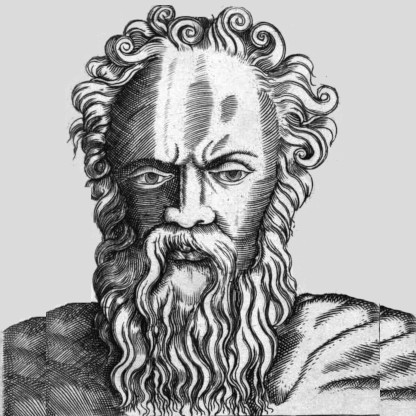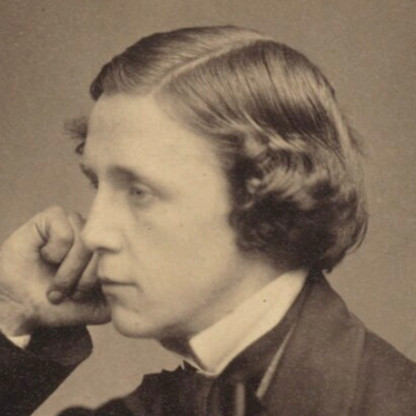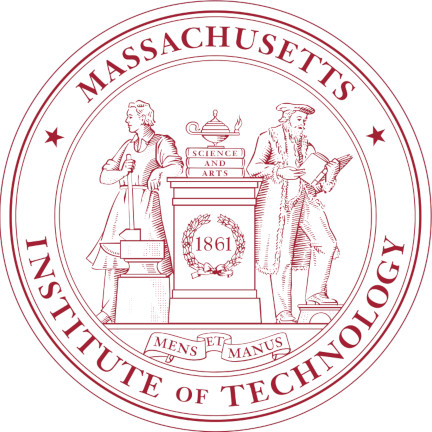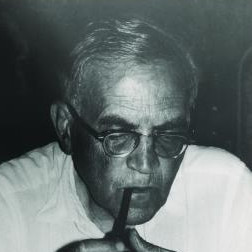Nouns by Tag math
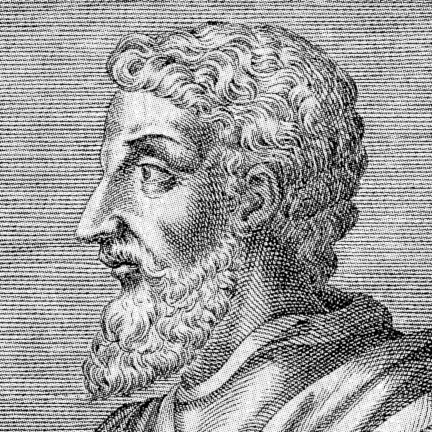
Marcus Terentius Varro (Varro Reatinus)
Ancient Roman historian best known for his Varronian chronology of the Roman Republic including his date of the founding of Rome as 21 April 753 (which is almost certainly wrong, but still traditionally accepted).
However, he was a prolific scholar and author, and was likely the originator of the liberal arts, although he added medicine, architecture, and agriculture to the 7 liberal arts recognized in the middle ages.Rrecognized by Plutarch as "a man deeply read in Roman history"
However, he was a prolific scholar and author, and was likely the originator of the liberal arts, although he added medicine, architecture, and agriculture to the 7 liberal arts recognized in the middle ages
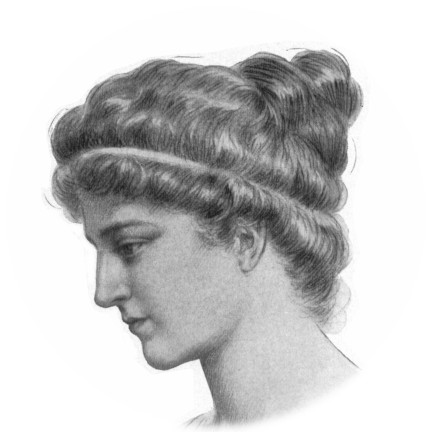
Hypatia
Hypatia (c. 360 – 415) was a Greek philosopher and mathematician who served as head of the Platonist school in Alexandria, Egypt, where she taught philosophy, mathematics and astronomy prior to her murder by a fanatical mob because she had been advising the Christian prefect of Egypt Orestes during his feud with Cyril, Alexandria's dynastic archbishop. The extent of Cyril's personal involvement in her murder remains a matter of scholarly debate.
Hypatia was a Neoplatonist, but, like her father, she rejected the teachings of Iamblichus and instead embraced the original Neoplatonism formulated by Plotinus. The Alexandrian school was renowned at the time for its philosophy, and Alexandria was regarded as second only to Athens as the philosophical capital of the Greco-Roman world.
Hypatia taught students from all over the Mediterranean. According to Damascius, she lectured on the writings of Plato and Aristotle. He also states that she walked through Alexandria in a tribon, a kind of cloak associated with philosophers, giving impromptu public lectures
The Christian historian Socrates of Constantinople, a contemporary of Hypatia, describes her in his *Ecclesiastical History*:
> There was a woman at Alexandria named Hypatia, daughter of the philosopher Theon, who made such attainments in literature and science, as to far surpass all the philosophers of her own time. Having succeeded to the school of Plato and Plotinus, she explained the principles of philosophy to her auditors, many of whom came from a distance to receive her instructions. On account of the self-possession and ease of manner which she had acquired in consequence of the cultivation of her mind, she not infrequently appeared in public in the presence of the magistrates. Neither did she feel abashed in going to an assembly of men. For all men on account of her extraordinary dignity and virtue admired her the more.

Nasīr al-Dīn Tūsī (Muhammad ibn al-Hasan al-Tūsī)
Ccreator of trigonometry as a distinct mathematical discipline

Leonard Digges
16th century English scientist who invented a functioning telescope sometime between 1540 and 1559
According to son, Thomas, in his 1591 Pantometria, his father
hath by proportional Glasses duly situate in convenient angles, not only discovered things far off, read letters, numbered pieces of money with the very coin and superscription thereof, cast by some of his friends of purpose upon downs in open fields, but also seven miles off declared what hath been done at that instant in private places.
According to son, Thomas, in his 1591 Pantometria, his father
hath by proportional Glasses duly situate in convenient angles, not only discovered things far off, read letters, numbered pieces of money with the very coin and superscription thereof, cast by some of his friends of purpose upon downs in open fields, but also seven miles off declared what hath been done at that instant in private places.
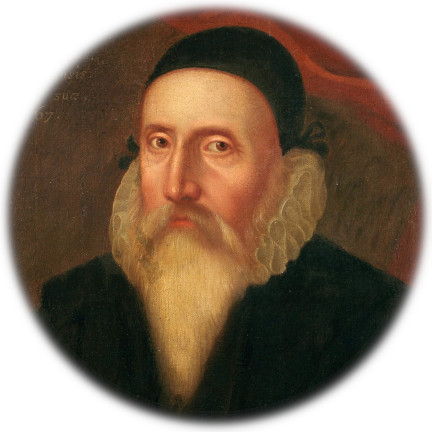
John Dee
Devoted much of his life to the study of alchemy, divination, and Hermetic philosophy. Also, as spy/advisor to Queen Elizabeth I, he was the original 007.
John Aubrey describes Dee as "tall and slender. He wore a gown like an artist's gown, with hanging sleeves, and a slit.... A very fair, clear sanguine complexion... a long beard as white as milk. A very handsome man."

Johannes Kepler
Keplers Laws of Planetary Motion:
These laws were an improvement over Copernicus who thought the planets traveled at constant speed through circular orbits.
- The orbit of a planet is an ellipse with the Sun at one focus.
- A line segment joining a planet and the Sun sweeps out equal areas during equal intervals of time.
- The square of the orbital period of a planet is proportional to the cube of the semi-major axis of its orbit.
These laws were an improvement over Copernicus who thought the planets traveled at constant speed through circular orbits.
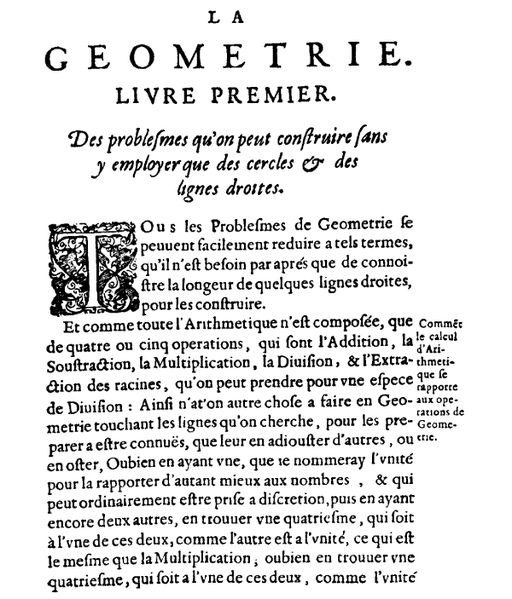
La Géométrie (Geometry)
First work to propose the idea of uniting algebra and geometry into a single subject, thereby inventing analytic geometry, which involves reducing geometry to a form of arithmetic and algebra and translating geometric shapes into algebraic equations. For its time this was ground-breaking. It also contributed to the mathematical ideas of Leibniz and Newton and was thus important in the development of calculus.
It is an appendix to Discours de la méthode (Discourse on the Method), written by René Descartes. In the Discourse, he presents his method for obtaining clarity on any subject. La Géométrie and two other appendices, also by Descartes, La Dioptrique (Optics) and Les Météores (Meteorology), were published with the Discourse to give examples of the kinds of successes he had achieved following his method (as well as, perhaps, considering the contemporary European social climate of intellectual competitiveness, to show off a bit to a wider audience).

Isaac Newton
Most famous for discovering the Law of Gravity, the Calculus, and other scientific and mathematical advances, but he spent most of his time in occult bible study and searching for the philosopher's stone.
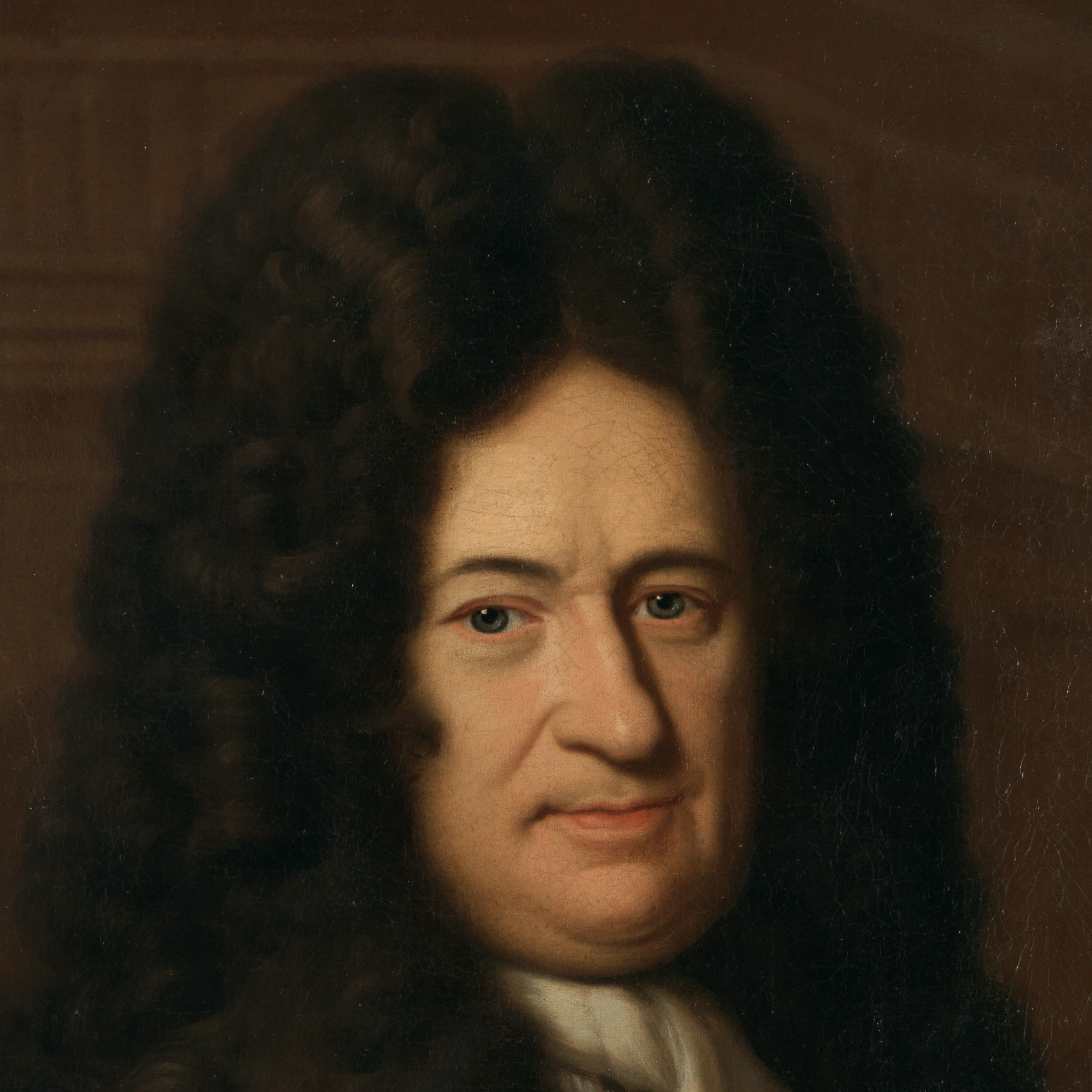
Gottfried Wilhelm Leibniz (von Leibnitz)
A prominent German polymath and one of the most important logicians, mathematicians and natural philosophers of the Enlightenment.
Best remembered for conceiving the ideas of differential and integral calculus, independently of Isaac Newton. Mathematical works have consistently favored Leibniz's notation as the conventional expression of calculus.
Best remembered for conceiving the ideas of differential and integral calculus, independently of Isaac Newton. Mathematical works have consistently favored Leibniz's notation as the conventional expression of calculus.

Jacob Bernoulli
17th century Swiss mathematician who solidified many concepts of modern probability theory and also discovered the mathematical constant e.
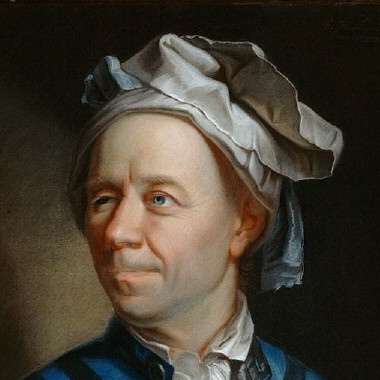
Leonhard Euler
Prolific Swiss mathematician, physicist, astronomer, geographer, logician and engineer — one of the most eminent mathematicians of the 18th century and held to be one of the greatest in history.
He made important and influential discoveries in many branches of mathematics, such as infinitesimal calculus and graph theory, while also making pioneering contributions to several branches such as topology and analytic number theory.
He also introduced much of the modern mathematical terminology and notation, particularly for mathematical analysis, such as the notion of a mathematical function.
He is also known for his work in mechanics, fluid dynamics, optics, astronomy and music theory
He made important and influential discoveries in many branches of mathematics, such as infinitesimal calculus and graph theory, while also making pioneering contributions to several branches such as topology and analytic number theory.
He also introduced much of the modern mathematical terminology and notation, particularly for mathematical analysis, such as the notion of a mathematical function.
He is also known for his work in mechanics, fluid dynamics, optics, astronomy and music theory
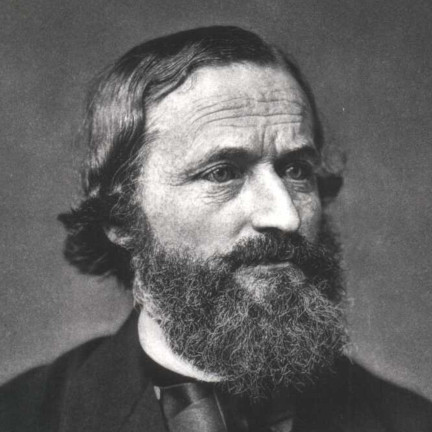
Gustav Kirchhoff (Gustav Robert Kirchhoff)
German physicist famous for several sets Kirchhoff's Laws
- Kirchhoff's circuit laws
- Kirchhoff's three laws of spectroscopy
- Kirchhoff's law of thermochemistry
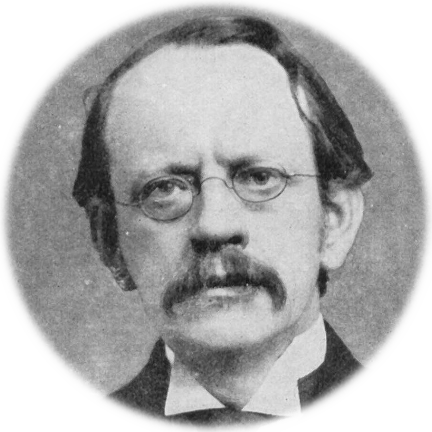
J. J. Thomson (Sir Joseph John)
British physicist and Nobel Laureate in Physics, credited with the discovery of the electron, the first subatomic particle to be discovered.
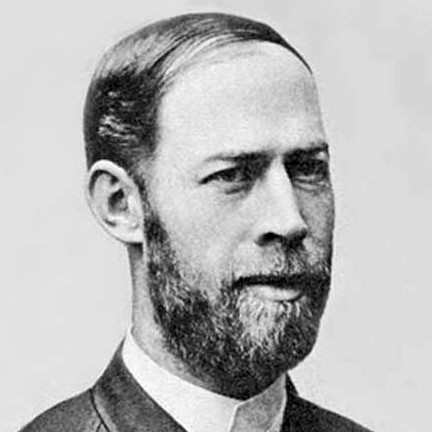
Heinrich Rudolf Hertz
Nineteenth century German physicist who proved the existence of the electromagnetic waves.
When asked about the applications of his discoveries, he replied, "Nothing, I guess."
When asked about the applications of his discoveries, he replied, "Nothing, I guess."
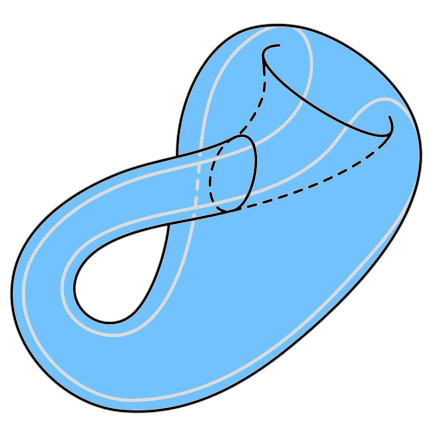
Klein bottle
A one-sided surface conceived as a 3D mobius strip. If traveled upon, the traveler may visit the inside as well as outside.
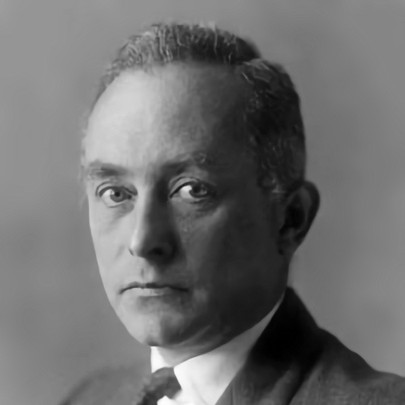
Max Born
20th century German-Jewish physicist and mathematician instrumental in the development of quantum mechanics
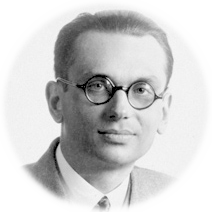
Kurt Gödel
Gödel essentially constructed a formula that claims that it is unprovable in a given formal system. If it were provable, it would be false. Thus there will always be at least one true but unprovable statement. That is, for any computably enumerable set of axioms for arithmetic (that is, a set that can in principle be printed out by an idealized computer with unlimited resources), there is a formula that is true of arithmetic, but which is not provable in that system. To make this precise, however, Gödel needed to produce a method to encode (as natural numbers) statements, proofs, and the concept of provability; he did this using a process known as Gödel numbering.
Gödel automatically became a citizen of Czechoslovakia at age 12 when the Austro-Hungarian Empire collapsed following its defeat in the First World War. According to his classmate Klepetař, like many residents of the predominantly German Sudetenländer, "Gödel considered himself always Austrian and an exile in Czechoslovakia". In February 1929, he was granted release from his Czechoslovakian citizenship and then, in April, granted Austrian citizenship.
When Germany annexed Austria in 1938, Gödel automatically became a German citizen at age 32. In 1948, after World War II, at the age of 42, he became an American citizen.
##### References
* [Wikipedia, *Kurt Gödel*](https://en.wikipedia.org/wiki/Kurt_G%C3%B6del)
* [StackExchange, *What is the difference between Gödel's completeness and incompleteness theorems?*](https://math.stackexchange.com/questions/14709/what-is-the-difference-between-g%C3%B6dels-completeness-and-incompleteness-theorems)
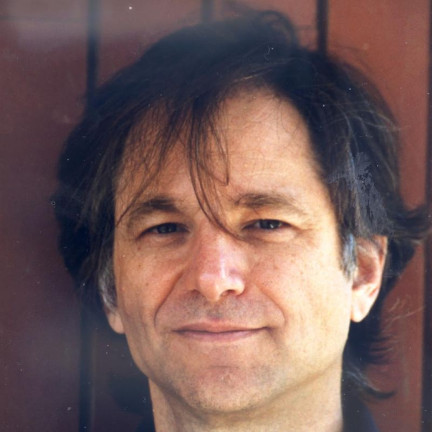
Leonard Adleman
American computer scientist known for being one of the creators of the RSA encryption algorithm, and for the creation of the field of DNA computing.

